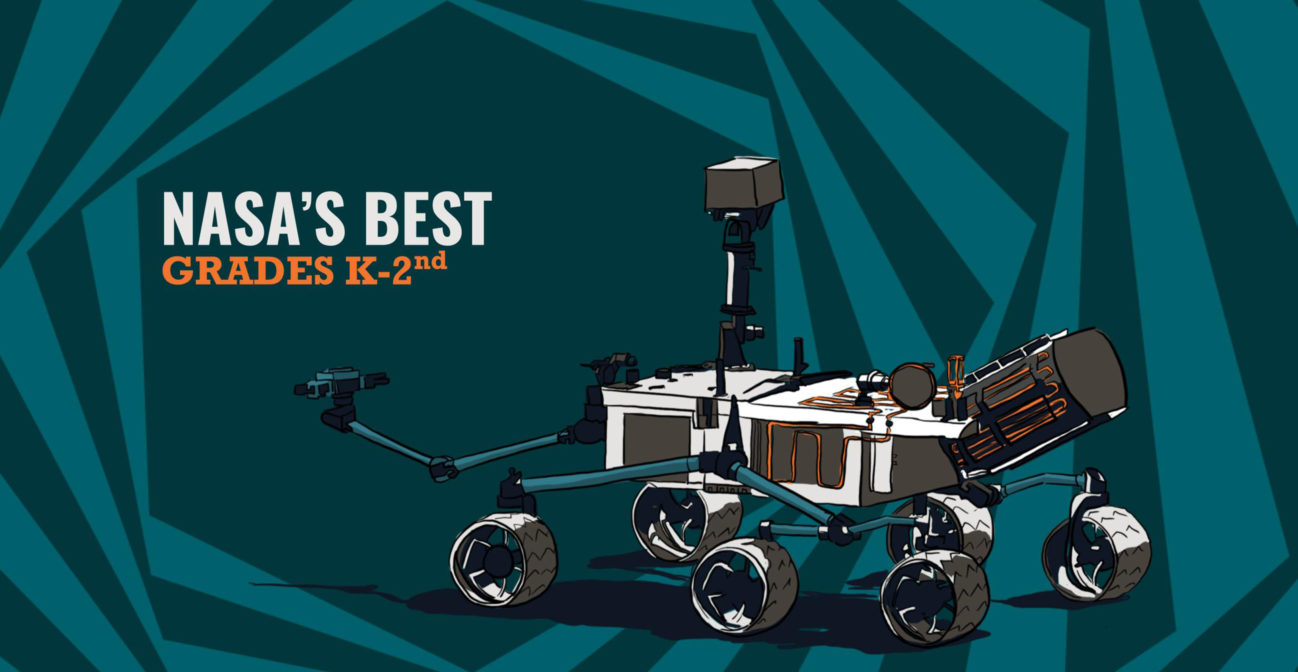Join us for conversations that inspire, recognize, and encourage innovation and best practices in the education profession.
Available on Apple Podcasts, Spotify, Google Podcasts, and more.

K-2 Learners will be guided through a series of challenges that follow the engineering design cycle. Join NASA on an adventure through solving an engineering challenge to design and build a robotic lunar rover to traverse the lunar landscape.
OBJECTIVE
To demonstrate an understanding of the Engineering Design Process while utilizing each stage to successfully complete a team challenge.
PROCESS SKILLS
Mapping, communication, measuring, logical thinking
MATERIALS
STUDENT PAGES
PRE-ACTIVITY SET-UP
Set up a small obstacle course with a few chairs, waste paper baskets, and/ or a table. The course does not have to be too complicated, but set it up so students will have to take at least one right turn and one left turn. Also, give the students enough obstacles so there is more than one path to take to the “finish”. An area of about 25 square meters is recommended.
Please note: This activity will require two 60-90 minute sessions to complete. Make sure to set up the obstacle course exactly the same for both sessions. Also, the student acting as the robot will need to be blindfolded for this activity. Please take time to discuss with your students about assisting or “spotting” their blindfolded peer.
Explain to the students that many of NASA’s missions are conducted by robots.
Ask students to draw their ideas of what a robot looks like and compare the differences.
Students will define the robot’s route through the lunar landing site and count the number of steps needed for each command. They will then create a command sequence to use for their robot that matches the route they have planned on their maps.
Student teams must navigate the lunar landing site, using the command sequence each team designed. Have students cut out the commands into strips of paper and designate one student per team to deliver each command. Designate another team member to run a stopwatch. Position the robots at the start and have the teams sitting or standing aside from the obstacle course. The students designated to deliver commands are to deliver one command at a time – one student walks to the robot, delivers one command, then returns to the team. Robot performs the command. The next student then walks to the robot and delivers the command, returns, etc. Only one command is delivered at a time to represent one line of code sent over a radio signal. The rest of the team cannot deliver another command until they have determined if the robot has successfully executed that command. Have each team record how much time it takes to successfully complete the task when the robot picks up the “lunar ice”.
Engage students in the following questions:
Ask teams to think about how a spacecraft might land on the Moon safely.
Ask them to think about why it does not make sense to use a parachute on the Moon.
Answer: There is no air on the Moon to fill up the parachute.